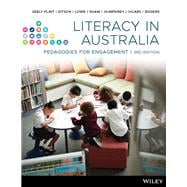Infused with our authors’ personal experiences teaching, Literacy in Australia, 3rd Edition is delivered as a full colour printed textbook with an interactive eBook code included. This enables students to master concepts and succeed in assessment by taking the roadblocks out of self-study, with features designed to get the most out of learning such as animations, interactivities, concept check questions and videos.
With a prioritised focus on the Aboriginal and Torres Strait Islander histories and cultures featured throughout the text, pre-service teachers will be well-equipped with the knowledge of what kinds of activities they can include in and out of the classroom for an enriching learning experience for their students.








